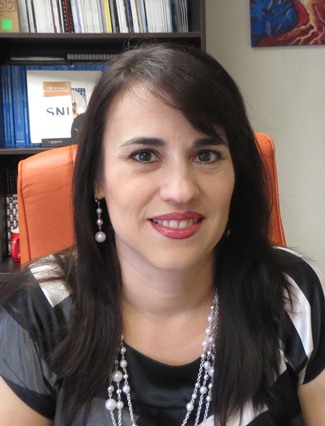
Dr. Consuelo Mancias Guerra
The discovery of stem cells (SCs) has led to an ongoing revolution of medicine. Starting back in the 1950s, blood-forming SCs were first used to repopulate a patient’s immune system. This was the first example of a successful SC therapy, and is still commonly used today for blood and bone-marrow-related cancers such as leukemia and myeloma.
Recently, the biology of SCs has created novel therapies for previously intractable conditions. One area where cell therapy has generated hope is neurology. Cellular therapy of the injured brain has been studied in preclinical models for more than a decade, providing the basis for the development of new therapies for a broad spectrum of human neurological diseases. The mechanism by which transplantation of SCs leads to an enhanced functional recovery and structural reorganisation is still not understood. Nevertheless, the use of autologous bone marrow-derived SCs does not face ethical, political, biological and regulatory hurdles, like embryonic stem cells does.
Cell therapy protocols for cerebral palsy are an example of a new approach to a condition that is difficult to treat. The current US clinical trials, listed in ClinicalTrials.gov, are dependent upon the fact that parents chose to preserve their child’s umbilical cord blood at the time of birth. Our clinical trial, listed as ClinicalTrials.gov NCT01019733, was carried out at a University Hospital in Monterrey, Mexico, where we treated children with cerebral palsy that were not able to bank their cord blood. Instead we use SC derived from the bone marrow.
The patients enrolled in our trial received a subcutaneous medication for 4 consecutive days to stimulate their bone marrow to produce SCs, their bone marrow was then harvested, SCs were concentrated at the laboratory, and then they were delivered through the patient’s cerebrospinal fluid on the fifth day of the procedure. In this trial, we made the translation from the laboratory to the clinic both medically and economically feasible. Our team conducted a thorough evaluation of each patient, from initial interviews to the final assessments. Patients came to us from different countries, including Mexico, US, Canada, Honduras, Colombia, and Italy.
The condition and response of patients in our trial was assessed at regular intervals to ensure the safety of the therapy. Even with this small group, less than 20 patients seen over 36 months, we were able to reach our goal, which was to demonstrate the safety of the procedure. This success opens the door to a phase II clinical trial that can test the efficacy of autologous bone marrow SCs. The preliminary results regarding efficacy were promising. We cannot say more, because the data are currently under review for publication. We hope that our work will offer a better quality of life to children with cerebral palsy.
In conclusion, while the field of SC medicine is rapidly maturing, many potential SC therapies remain theoretical or restricted to successes in animal trials. Countless studies are still required on the expanding frontier of SC research before a complete mastery of SC manipulation for maximum therapeutic potential can be achieved. In the meantime, we believe that patients with cerebral palsy can be treated with their own bone marrow SCs when their cord blood SCs were not preserved.
Dra. María del Consuelo Mancías-Guerra attended medical school in “Universidad Autónoma de Nuevo León” and graduated in general practice in 1992. She was trained in Pediatrics from 1993 to 1996 and then in Clinical Hematology from 1996 to 1998 in the University Hospital “Dr. José E. González” of the same University at Monterrey. She became a fellow in bone marrow transplantation and stem cells cryopreservation at the University of Texas in San Antonio from 1998 to 1999. She is board certified by Mexico’s “Consejo Mexicano de Hematología”. Since 1999, she is head of a private blood bank at the “OCA Hospital” in Monterrey, and since 2001, became part of the Hematology Service of the University Hospital in Monterrey. There she started the cryopreservation laboratory and the first public cord blood bank in Mexico. Dr. Mancías-Guerra participates actively in training medical residents and PhD students, has written more than 20 publications in medical journals, and 8 chapters in books about pediatrics and hematology. She has won several national awards of medicine. Her main area of research interest is cellular therapy, in which she has clinical trials running and listed in ClinicalTrials.gov. References Knoepfler PS. Deconstructing Stem Cell Tumorigenicity: A Roadmap to Safe Regenerative Medicine. Stem Cells. 2009; 27(5):1050-6. doi:10.1002/stem.37 Sng J., Lufkin T. Emerging stem cell therapies: treatment, safety, and biology. Stem Cells International. 2012; Article 521343. doi:10.1155/2012/521343 Carroll JE, Mays RW. Update on stem cell therapy for cerebral palsy. Expert Opin Biol Ther. 2011; 11(4):463-71. doi:10.1517/14712598.2011.557060 To learn more about cord blood banking, visit Parent’s Guide to Cord Blood Foundation at https://parentsguidecordblood.org/en/news/new-therapeutic-strategies-cerebral-palsy